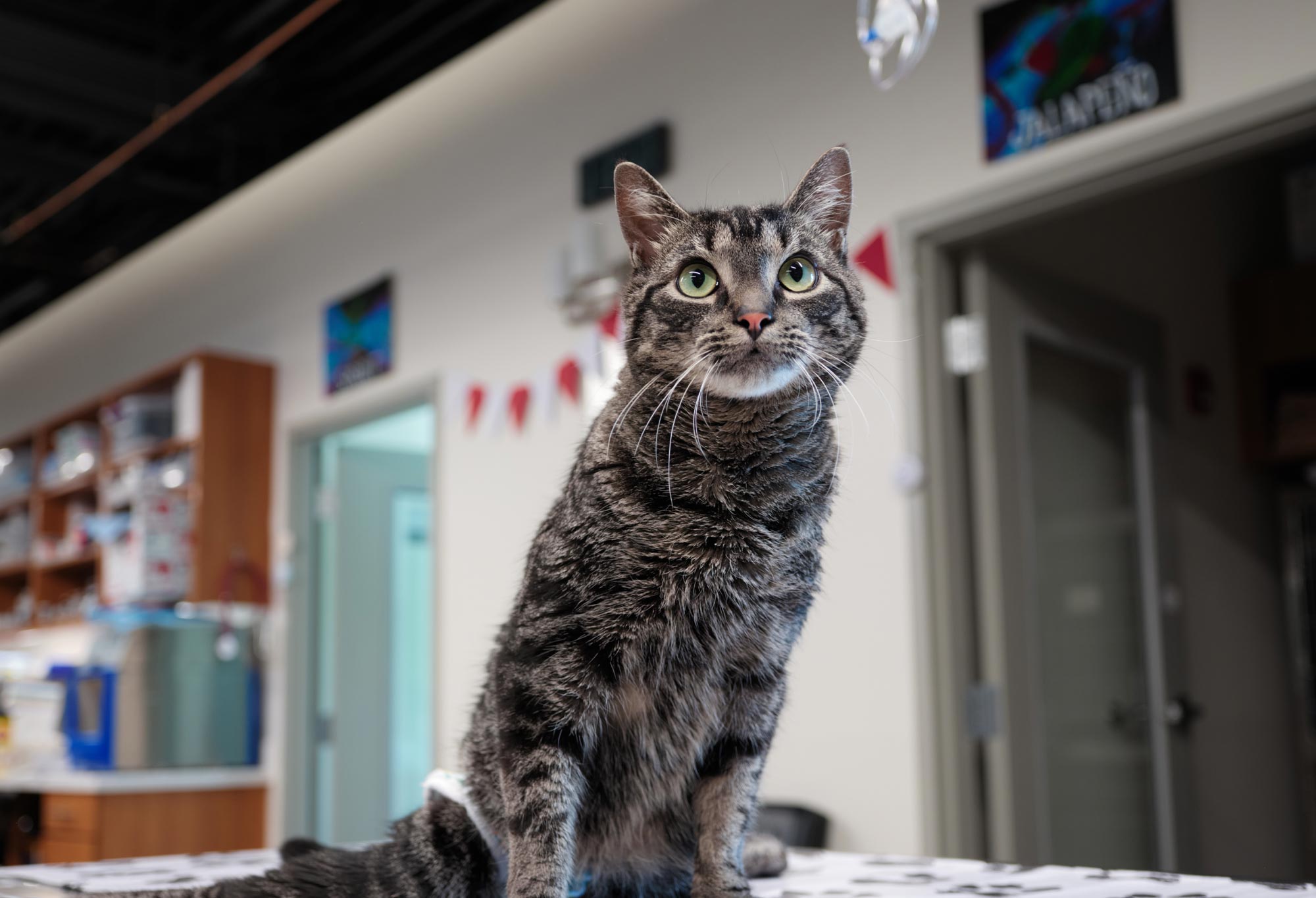
Are Lilies Poisonous to Cats?
Dr. Katie Osekavage
Call & Speak with a doctor Open 24/7, Even Holidays!
Walk in today for:
Emergencies
Point-of-Care Ultrasound
Urgent Care
X-Rays
Diagnostics + Testing
End-of-Life Care
Surgery
Treatment + Hospitalization
Lilies stand out in the floral world for their beauty and fragrance. However, for cat owners, understanding the risks these botanical beauties pose is essential. Knowing which types of lilies are hazardous, recognizing symptoms of poisoning, and knowing when to seek veterinary care can make a significant difference in your cat’s health.
Ready to learn about lily toxicity? Lovely, let’s go!
LILIES CAN BE PRETTY BUT POISONOUS
Not all lilies are created equal when it comes to the impact on cats. It’s vital to know which varieties pose a threat. True lilies are highly toxic to cats. These include:
- Daylilies
- Easter lilies
- Gloriosa aka fire lilies
- Lily of the Valley
- Tiger lilies
No matter if it’s the petals, leaves, or pollen, even a small amount ingested can lead to life threatening kidney damage in felines. Keeping these plants out of your cat’s reach is a key step in preventing accidental poisoning.
Cats are curious by nature, which sometimes turns into an emergency for you both. If you suspect your cat has eaten a lily, remember Veterinary Emergency Group aka VEG is here to help!
LIKE LILIES? WHAT PET OWNERS SHOULD KNOW
So, what’s a cat owner and lily lover to do? An all-out war on lilies may not always be necessary but consider this: some varieties can be fatal. Certain ones like Peace lilies and Calla lilies are not true lilies and are non toxic, however, even those flowers can cause mild irritation in the mouth and stomach. And no cat wants that!
How to identify poisonous lilies
Understanding the differences between toxic and non-toxic lilies is so important. True lilies have six petals, prominent stamens, and a distinct trumpet shape. They are often fragrant and come in a variety of colors.
In contrast, non-toxic varieties have a unique spathe—a usually colorful leaf that surrounds the flowering spike-like structure called the spadix. Familiarize yourself with these differences and always err on the side of caution when bringing plants into a home with cats.
Symptoms of Lily Poisoning in Cats
Symptoms often develop within two to six hours of exposure and can include:
- Dehydration
- Lack of appetite
- Lethargy
- Vomiting
As the condition progresses, more severe signs like kidney failure can occur, indicated by any of these:
- Increased thirst
- Increased urination
- Complete lack of urination
If you notice any of these symptoms and suspect your cat has been exposed to a toxic lily, it’s critical to seek immediate veterinary attention.
THE PURRRFECT SOLUTION: QUICK VETERINARY INTERVENTION
As the responsible pet owner that you are (you’ve made it this far in the blog, after all), you want to be ready for any emergency that may befall your fluffy furball. Find your nearest VEG and save us to your contacts. When it comes to lily poisoning, early detection and treatment is key. We’ve seen a lot of feline emergencies at VEG and we can’t stress it enough: the sooner a cat receives urgent veterinary care, the better the chances of recovery.
Treatment for lily poisoning may involve the following:
- Administering activated charcoal to absorb toxins
- Inducing vomiting
- Providing supportive care to support kidney function
POISONING PREVENTION
The expertise and advanced treatment options available at VEG can make a vital difference in the outcome for your cat. But we want to tell you how to prevent a cat-astrophe altogether.
There are a few steps you can take to help keep your cat safe:
- Keep all lilies, both cut flowers and plants, out of your home and garden
- Be vigilant when receiving floral arrangements and inform family and friends of the dangers lilies pose to your cat
- Educate yourself about other common household plants that can be harmful to cats
- Consider cat-safe alternatives like Boston ferns, spider plants, and African violets. These can add beauty to your home without posing a risk
WHAT TO DO IF YOUR CAT ATE A LILY
If you suspect your cat has ingested part of a lily, take immediate action.
- Remove any plant material from your cat’s mouth and coat
- Do not attempt home remedies or wait for symptoms to develop or escalate
- Contact VEG immediately for advice—our team is equipped to provide the necessary care and support to treat lily poisoning effectively. Immediate treatment can prevent serious kidney injury
At VEG, we are committed to providing exceptional emergency care for your cat. If you suspect lily poisoning, don’t hesitate to call your friends at VEG. You can speak with an emergency-trained veterinarian right away. Or come in and we’ll triage your cat immediately. Best of all, you stay with your feline friend the entire time.

